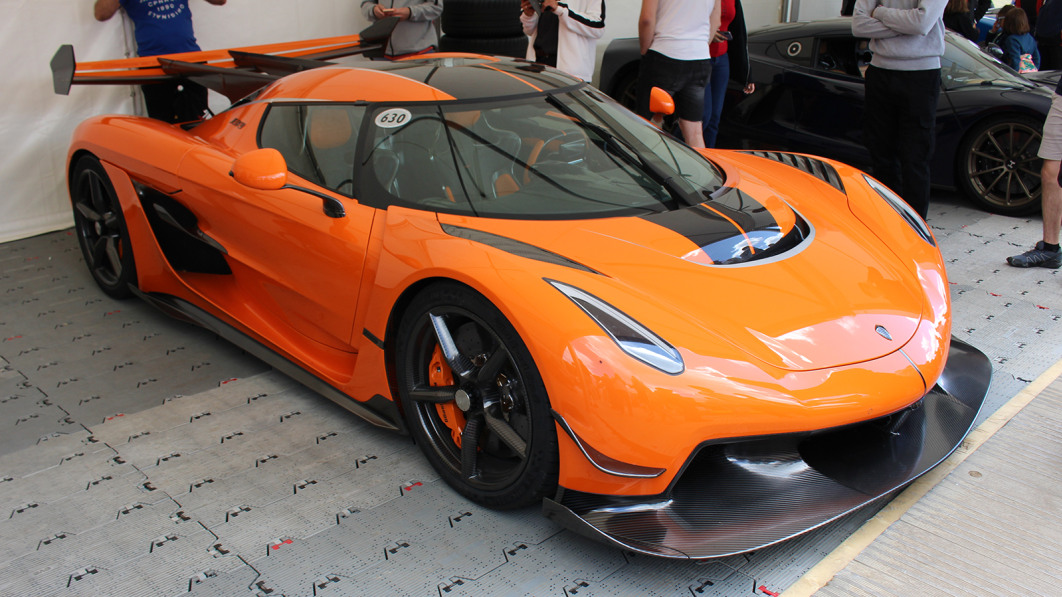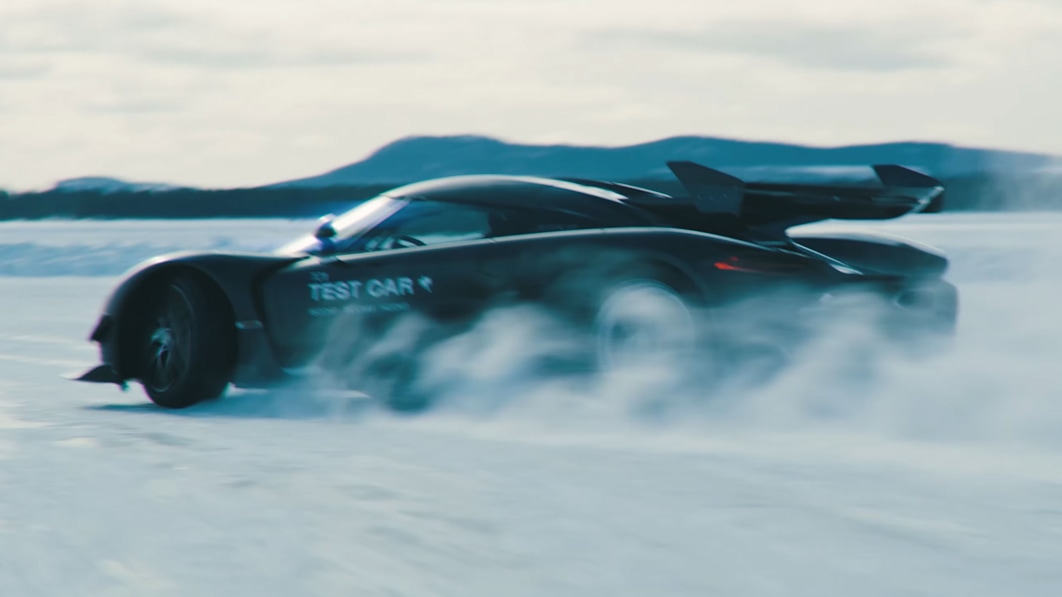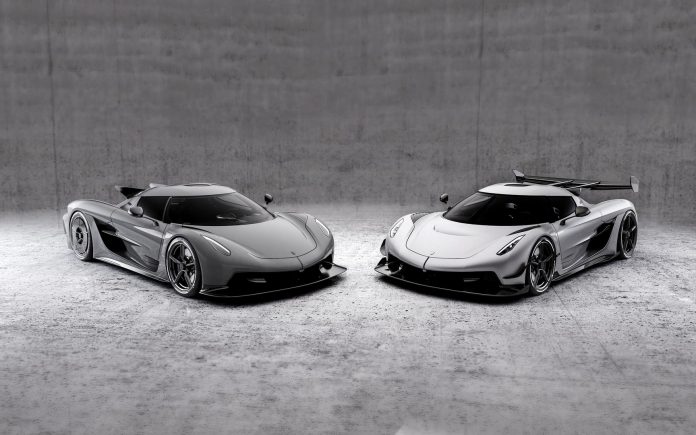Koenigsegg Jesko gets its turn to throw snow
Yes, it’s a tad bizarre to be posting winter testing videos in the middle of April, the same way it’s a little strange for it to be 38 degrees in parts of the Midwest this week. We can do without the weather, but we’ll take the videos, and here’s another — a counterpoint to a vid from a week ago. Rimac provided our last trip to northern Sweden, the Croatian hypercar maker there to test the Nevera in temperatures well colder than 5 degrees Fahrenheit. Two hours east of that, turns out Swedish hypercar maker Koenigsegg was testing its Jesko in the frozen stuff. The Swedes called their video Egg Hunt for obvious reasons, but there wasn’t much of a hunt, just a guy gathering giant neon eggs in the forest until the trail leads him to the Jesko. Seems the Swedish Easter Bunny might be way cooler than ours.
What’s cool about these two videos is they ask, “How do you like your ice dancing?” With four motors producing 1,914 horsepower and 1,741 pound-feet of torque to move 4,960 pounds, and emitting a gentle whine that can be barely heard above the soundtrack? Or with a 5.0-liter twin-turbo V8 producing 1,600 hp and 1,107 lb-ft to motivate 3,130 pounds and a Battlestar Galactica wing, emitting a roar that would have had the Easter Bunny apologizing to every hibernating bear and rethinking his egg hunt strategy? Take your time deciding, there’s no wrong answer. By the way, that wing and the power figure mark this as the standard Jesko on E85. The Jesko on standard gasoline makes ‘just’ 1,200 horsepower.
The Jesko and Nevera should be finding their way to the first customers shortly. Maybe next time they both vacation in northern Sweden, they’ll go together. That would be a video.
Building the 300 mph Koenigsegg Jesko
I was fortunate enough the be present at the 2019 Geneva Motor Show when Christian von Koenigsegg unveiled the then brand new Jesko to the gathered press during his conference, the bright white hypercar with the massive rear wing attracted a lot of attention, and we found out it wouldn’t even be the fastest version, back in 2019 they mentioned a Jesko 300, which we now know is called the Jesko Absolut, but back to 2019, and just two days before the car had to be sent to Switzerland, it wasn’t even finished, they were still working hard on putting this beauty together, but no worries, they made it.
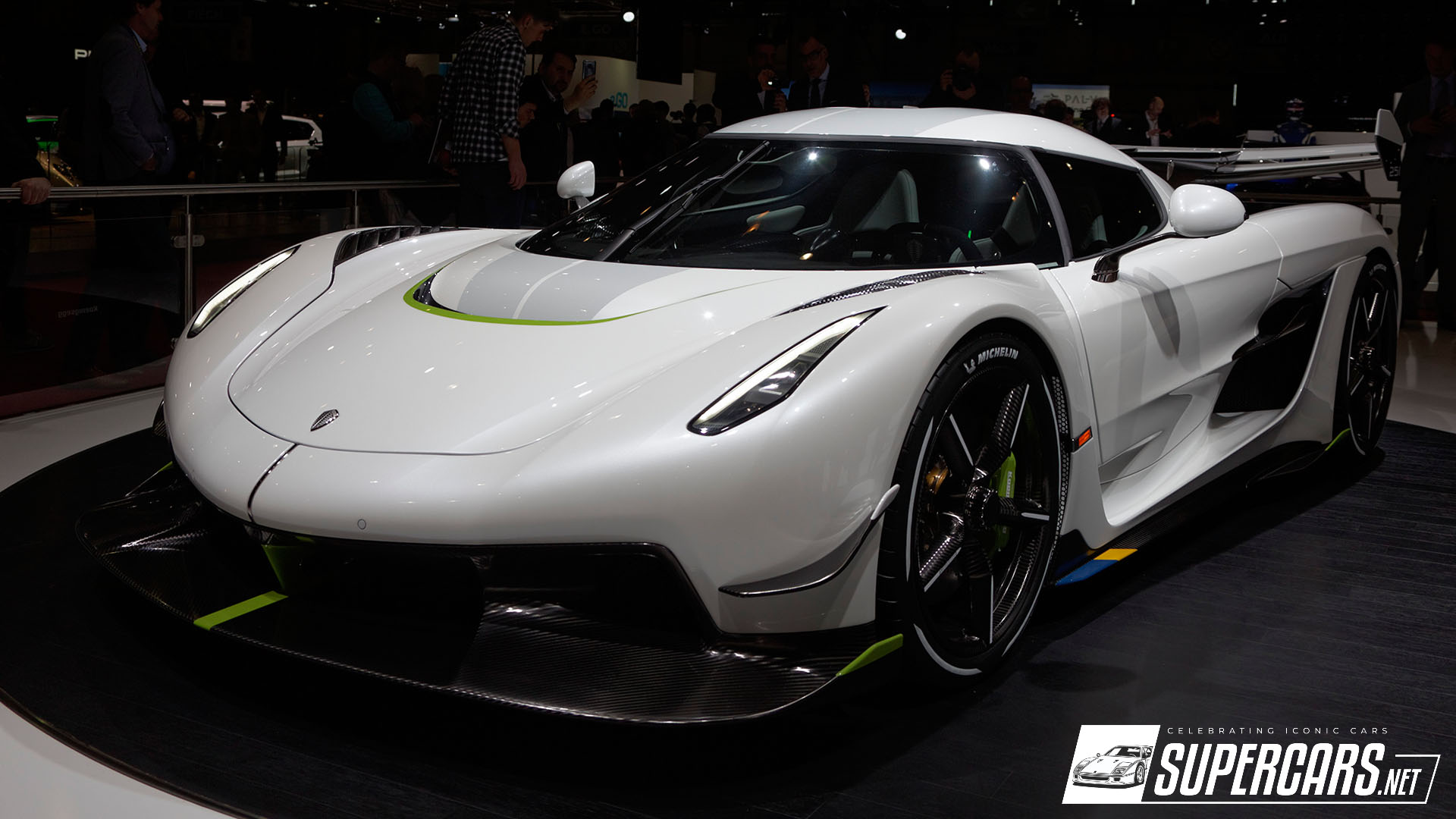

Top Gear actually did a video during their visit to Koenigsegg Automotive AB in Ängelholm, Skåne County, Sweden, just a few days ahead of the public unveiling of the Koenigsegg Jesko in Geneva, and it is a very interesting behind the scenes look at how these cars are usually finished just in time for such a major event, or in some case, almost, but not quite finished, and while we now know the Jesko was indeed ready to be shown to the public just a few days after this video was made, it still impressive to see what is going on inside the factory inside a former airforce hangar where 400 artisans are building these impressive Koenigsegg hypercars.


You might have noticed that there is always ghost somewhere on the Koenigsegg car to be found, and that goes back to the fact these hypercars are built inside the former hangar of Swedish oldest air force squadron, the Ghosts, we learn that the Koenigsegg Jesko had been in development for three years prior to the 2019 Geneva Motor Show, under the internal name ‘Ragnarok’, but the name Jesko was chosen for the production car in honor to Christian’s father, Jesko von Koenigsegg.


At the time the Koenigsegg Jesko Absolut wasn’t built yet, and the car shown in Geneva was the track-focused Jesko, with the massive rear wing, that can be angled as an air brake mind you, a deep front splitter, and a total of 880 kgs of downforce, which is too much to reach speeds in excess of 300 mph, but their simulations at the time, with a different aero package, would theoretically show the Jesko 300 to go even faster than 300 mph.
The problem with actually testing these kinds of speed in real life is that it takes a massive amount of preparation, not only finding a stretch of road long enough to do in two directions, but it also has to be safe, for the driver, for the car itself, and for the surrounding wildlife … imagine striking a bird that decides to fly over the road when you are approaching at 300 mph …
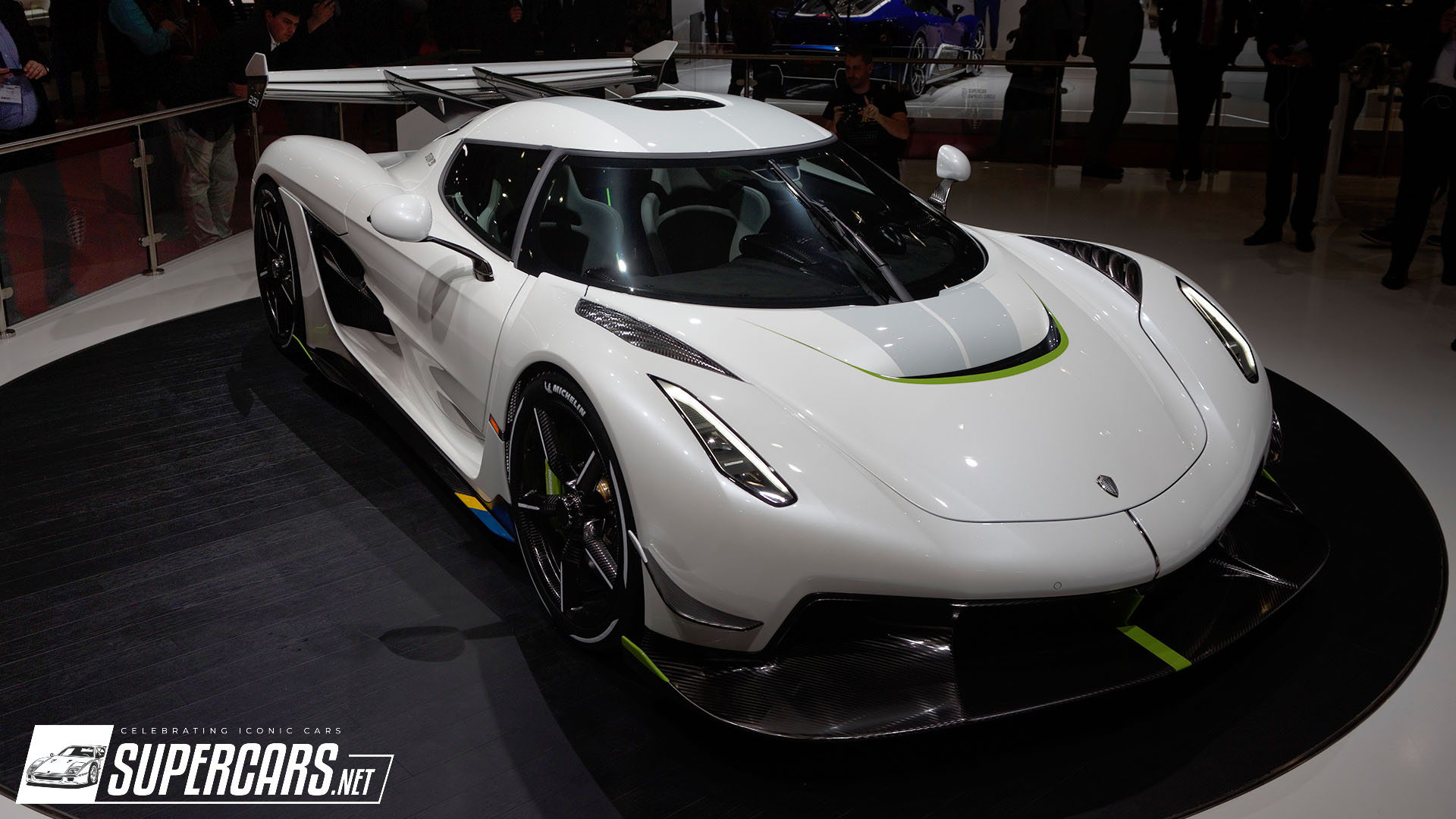

The Koenigsegg Jesko has a starting price of $2,800,000 before taxes, and before options, and with a hand-built car like a Koenigsegg, the sky is the limit, as they say, you can spec your very own Jesko to your liking, taking a look at the Geneva Show car you might notice those stunning carbon-fiber wheels … those are not included in that $2.8 million pricetag, they are a $65,000 option! But what’s even more interesting, the tire is two times heavier than the wheel itself.
The Koenigsegg Jesko is not a hybrid, she comes with a 5-Liter V8 engine that delivers a massive 1,600 hp on E85 fuel, coupled to the in-house developed gearbox, this is the fastest revving engine in any production car, and while these days people are asking more and more for a clear carbon fiber body, it usually takes between 600 and 800 hours to paint a Koenigsegg, they actually clear coat and sand down the carbon fiber panels three times in a row before they even add a splash of color on top.
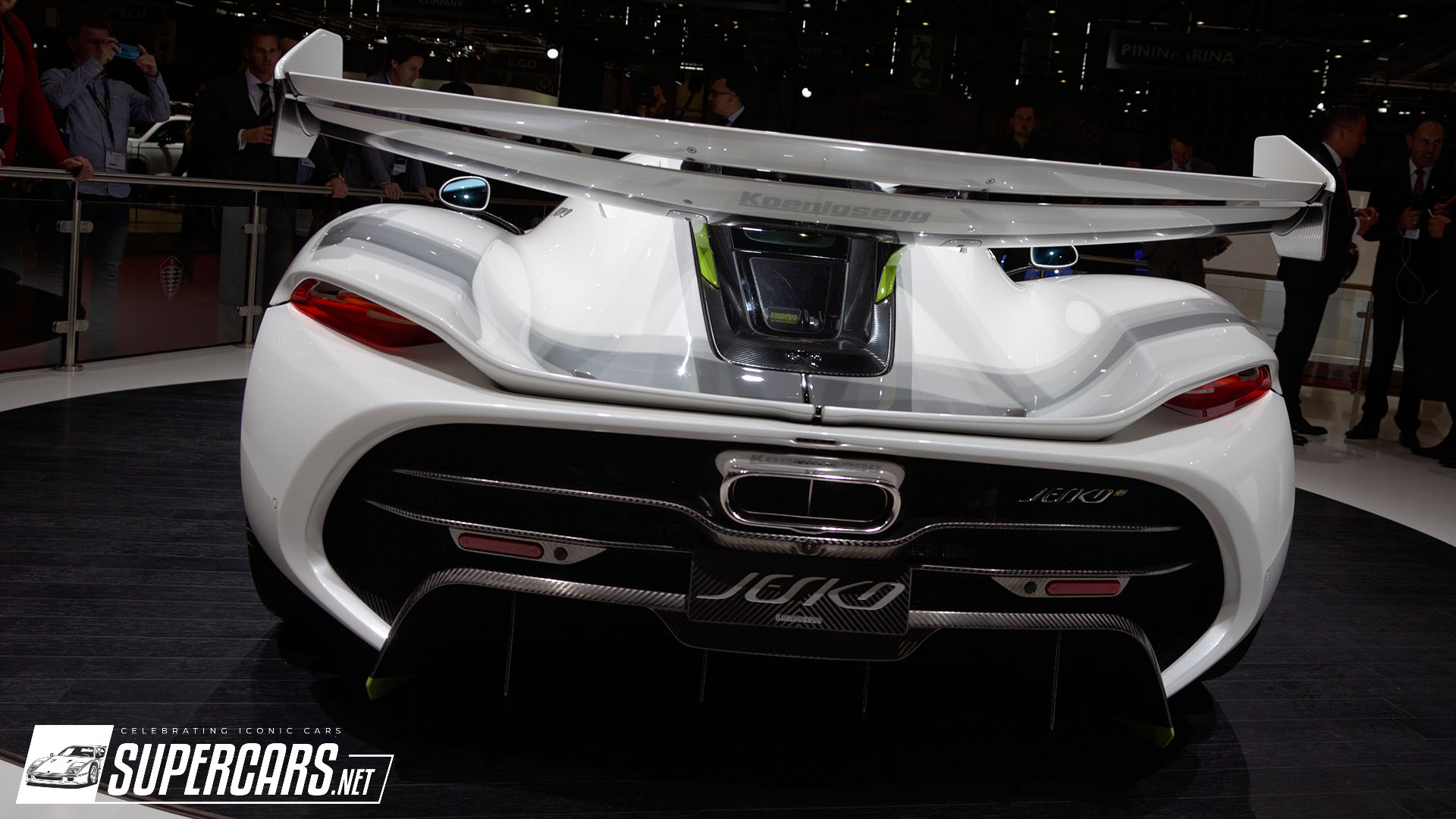

And then you still have all the smaller carbon fiber parts and aluminum parts that need to be polished before they are fitted onto the Koenigsegg, which takes another 200 hours of skilled work, even the wiring loom is hand made at the factory, adding wires to a vertical panel with a map fixed on it, very impressive indeed.
Top Gear Magazine’s Jack Rixwill take you on a tour of the Koenigsegg factory, right at the time they are finishing up the Jesko prototype to be taken to Geneva in March 2019 … enjoy the video below:
[embedded content] [embedded content]Koenigsegg impresses during Monterey Car Week
Christian von Koenigsegg, CEO and Founder, was visibly happy to be able to bring his two latest masterpieces to California this year for the Monterey Car Week, he had the absolutely stunning Koenigsegg Jesko in her Absolut version with him, together with the mindblowing, four-seater Gemera … to be shown at The Quail, A Motorsports Gathering, but also on The Ramp at Pebble Beach and furthermore on the Concept Lawn at the prestigious Pebble Beach Concours d’Elegance.
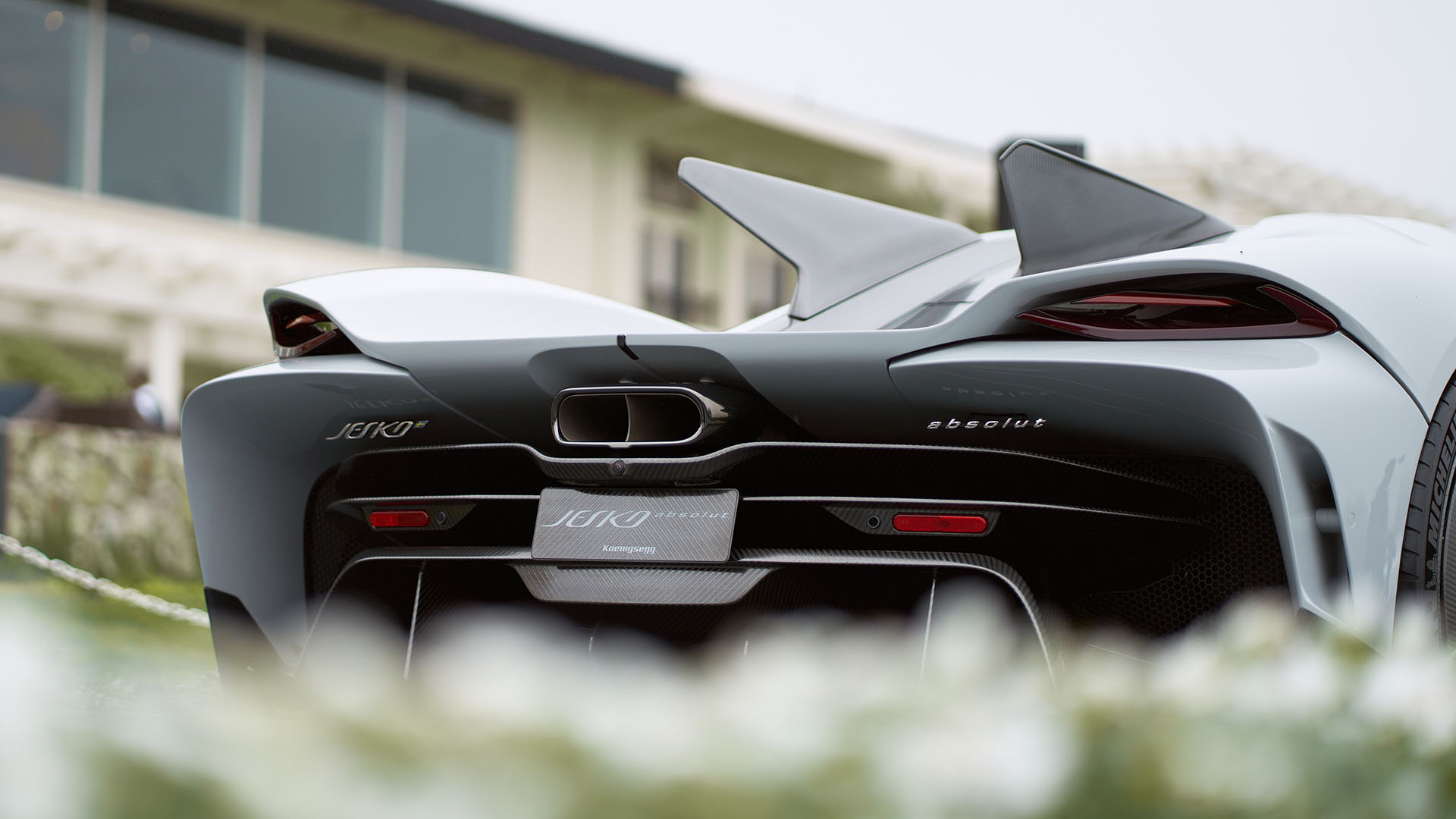

The Jesko Absolut is the fastest hypercar made by Koenigsegg, they even confirmed they aren’t contemplating building a faster series-production car in the future, the Jesko Absolut will be their fastest ever, period. Clients have the option between the Jesko Absolut or a track-oriented Jesko version, also mentioned as being the ‘Attack’ variant. The first deliveries of the 1,600 bhp Jesko are set for the spring of 2022.
“I was overwhelmed by the extremely positive reaction the Jesko Absolut and Gemera received during our time in Monterey”, said CEO and Founder Christian von Koenigsegg. “It was gratifying to personally hear from people who have long followed our brand and our passion.”
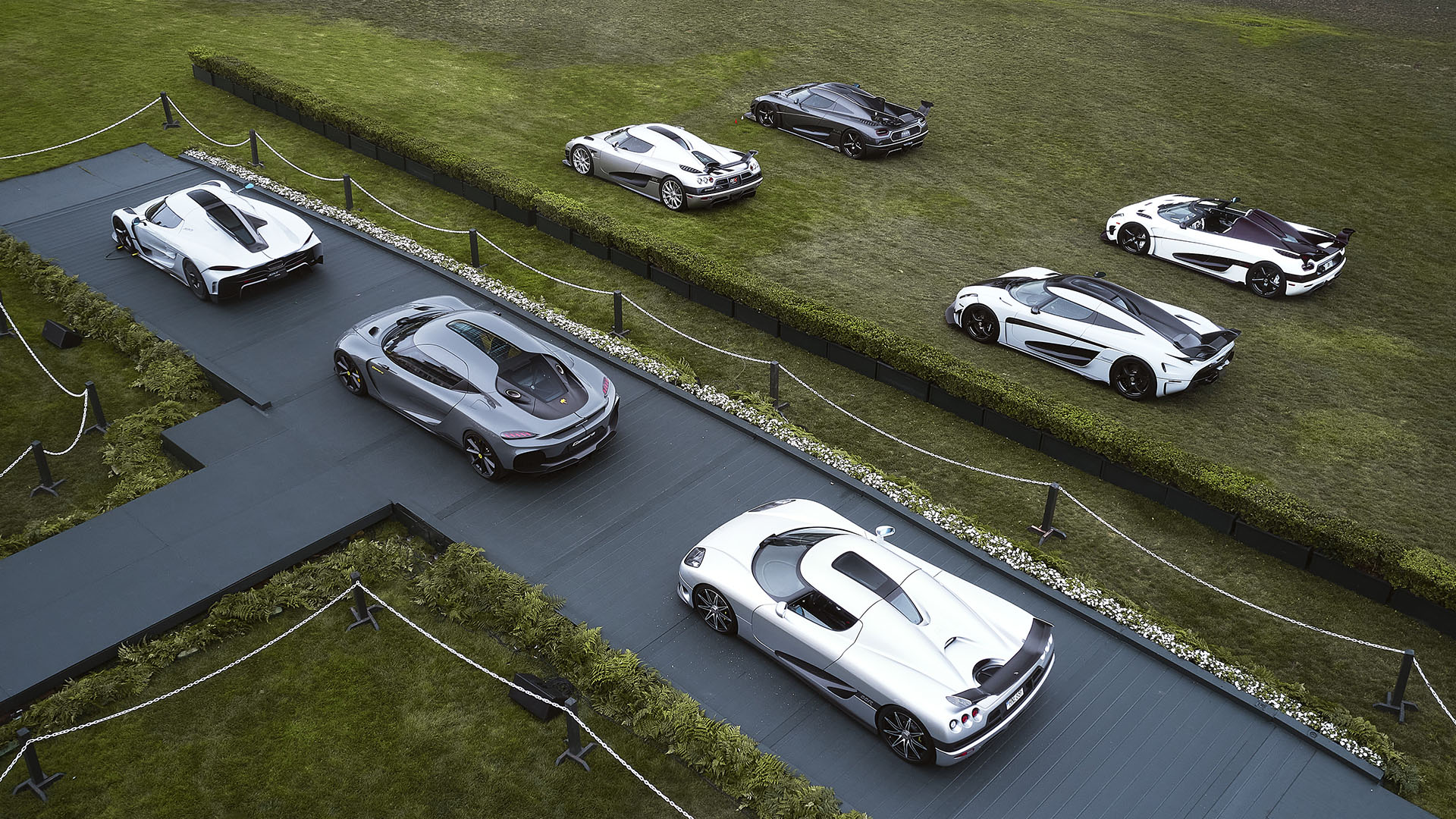

But what really impressed visitors, press, owners, and possible prospects was the fact another five of these rare Koenigsegg were shown during Monterey Car Week, one of them being the beautiful CCR, which happened to be in the United States of America for the first time ever, joining the trio of baffling hypercars were customer car from the US Koenigsegg Ghost Squadron, a CCX, the Agera FE, a Regera, and the intimidating Agera RS.
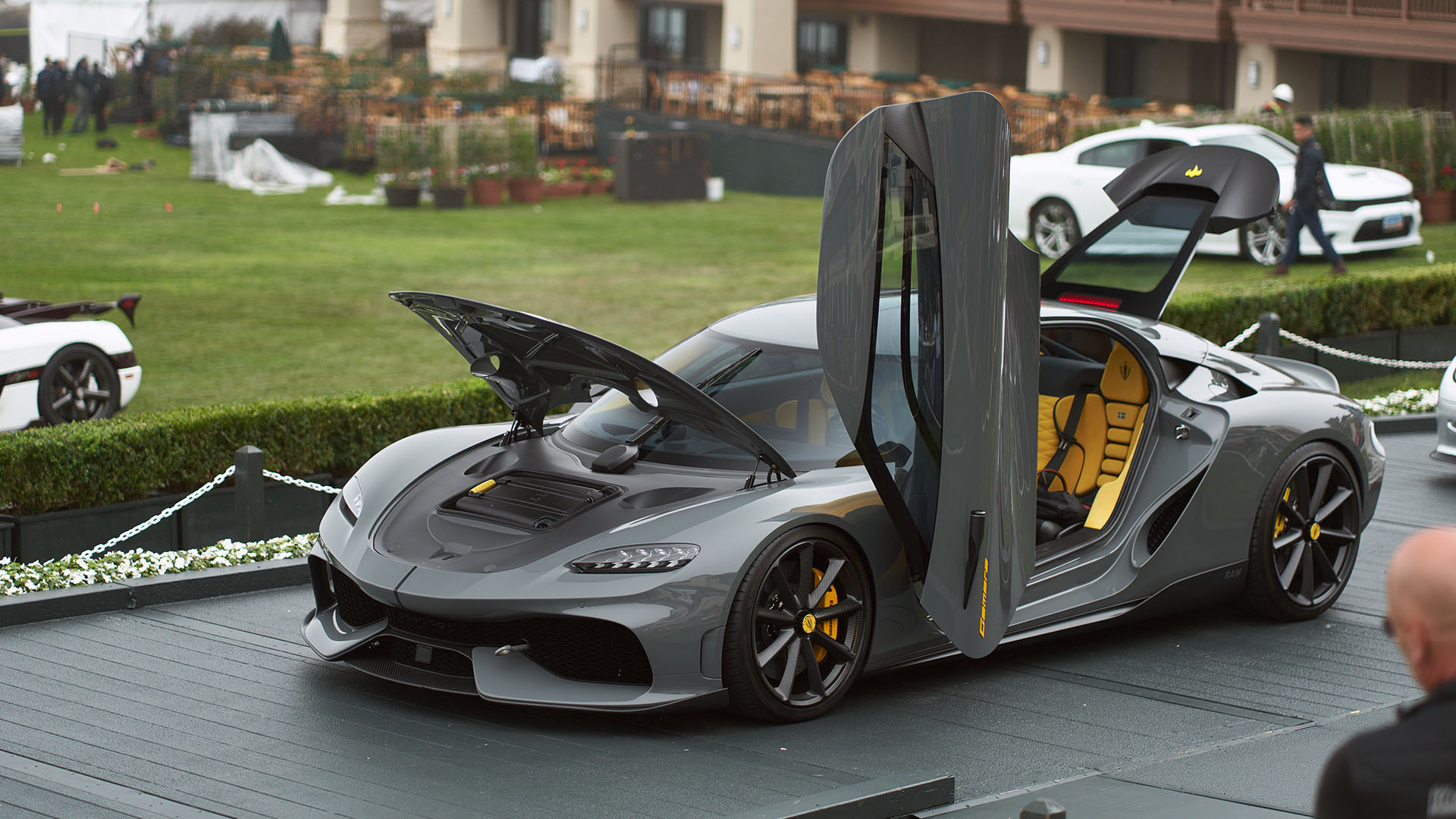

At this time the Koenigsegg Gemera is still a concept car, production isn’t planned before 2023, and it is introduced as the world’s first MEGA-GT, this is an ultra-high performance hypercar that can seat four people and take their luggage with it at the same time … and it still shows those traditional Koenigsegg dihedral synchro-helix actuation doors to access the spacious cabin.
Power comes from a 2-Liter 3-cylinder engine, developed by Koenigsegg and its sister company, Freevalve, this ‘Tiny Friendly Giant’ is future-proofed given its extreme performance, reduced fuel consumption and lowered emissions, and it can run on second-generation CO2 neutral renewable fuels, but the Gemera is a Hybrid, adding 3 electric motors, one on each of the rear wheels, and an additional one on the crankshaft, boasting a 50 km (31 mi) electric range, total power output is a massive 1,700 hp.
Christian von Koenigsegg walks us through the Jesko Attack
An official video from the Koenigsegg channel where Christian von Koenigsegg does a full walkthrough of the bright orange Jesko that was just finished, being a pre-production validation car, this one is very close to the actual production cars that they will start building, this Tang Orange Pearl with silver and carbon-fiber accents finished beauty reminds us of the Koenigsegg CCR color, did you know that back in the early 2000s about 50% of all Koenigsegg cars left the factory in Sweden in this orange shade?
Let’s just take a look at 15 minutes of automotive art … made in Sweden, by the way, this track focussed version no longer goes by the name Jesko, but they now call it the Jesko Attack, while the top speed version is still called the Jesko Absolut.
[embedded content] [embedded content]First pre-series production Jesko ready
The Koenigsegg Jesko was unveiled at the last Geneva Motor Show to date, the 2019 edition, and this new hypercar drew a lot of attention in Switzerland when the covers came off, this was a brutal looking car in true Koenigsegg tradition, with a claimed top speed of 300 mph from what they claim is their lightest and most powerful 5.0-liter twin-turbo V8 engine yet.

 Koenigsegg Jesko at Geneva in 2019 – photo copyright Mark Smeyers
Koenigsegg Jesko at Geneva in 2019 – photo copyright Mark SmeyersNumbers like 1,600 hp on E85 biofuel and 1,280 on regular gasoline were mentioned, a maximum torque of 1,106 lb-ft required a special 9-speed multi-clutch gearbox built in-house by Koenigsegg at 170 mp the aerodynamic design of this Jesko with that massive rear wing creates 2,200 pounds of downforce … at top speed, this number increases to more than 3,000 pounds!

 Koenigsegg Jesko at Geneva in 2019 – photo copyright Mark Smeyers
Koenigsegg Jesko at Geneva in 2019 – photo copyright Mark SmeyersAbout a year later Koenigsegg unveiled something even more impressive … the Jesko Absolut, built for all-out top speed records, while the ‘regular’ Jesko is more track-focused with her massive front spoiler lip and imposing rear wing with double struts, the Jesko Absolut has been made as smooth as possible, with the least possible drag … a drag coefficient value of only 0.278 Cd has been achieved for a top speed in excess of 330 mph, that is 532 km/h, which would shatter any top speed record to date.
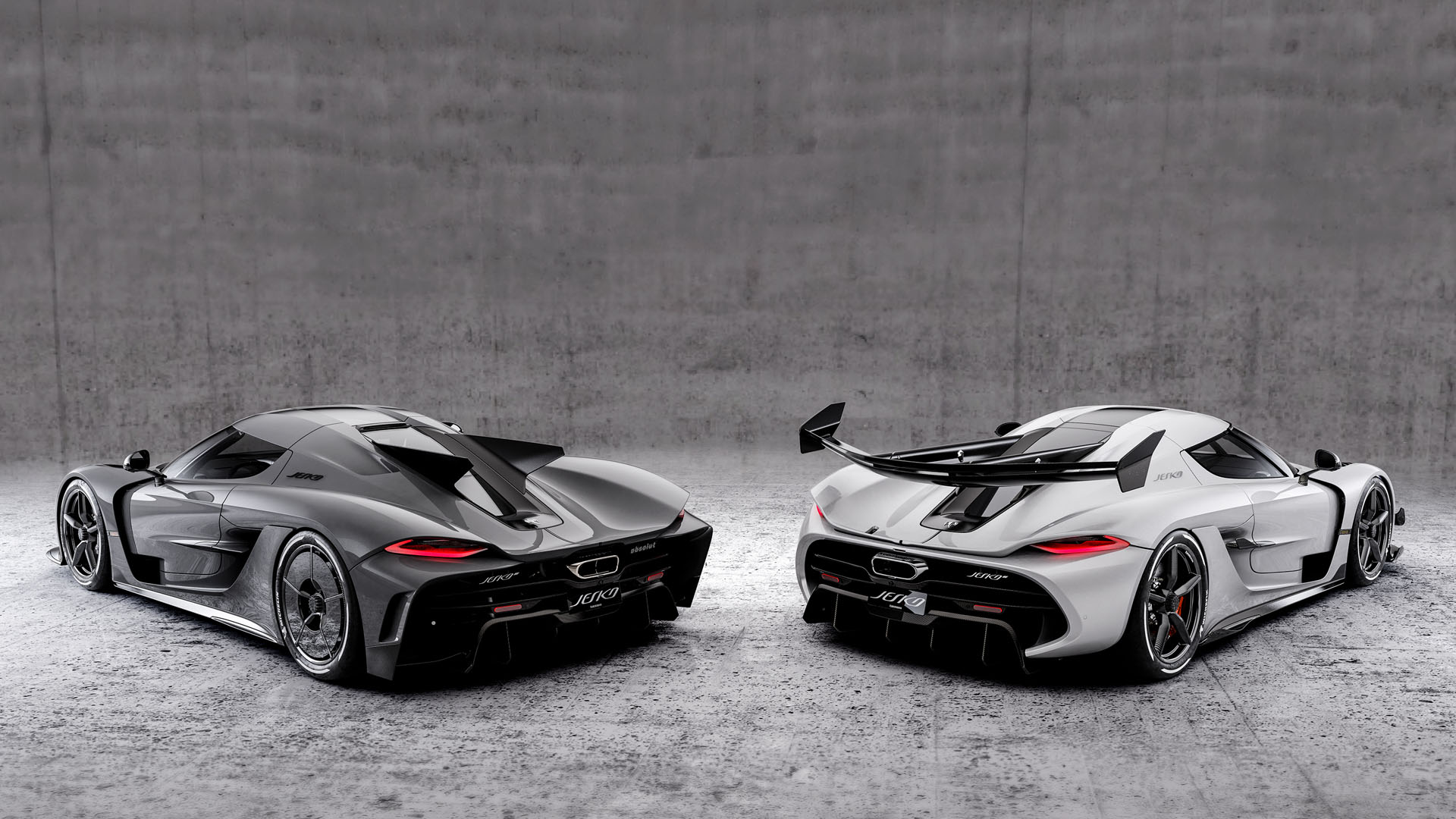

Koenigsegg limited the production for the Jesko to 125 units, priced at US$3,000,000 each with initial deliveries by the spring of 2022, customers will have the option to choose between either the Jesko or the Jesko Absolut trim, if there will be a price difference isn’t mentioned in the official documentation, but I guess if you’re ready to part with $3,000,000 for such an amazing car, a few $100,000 more or less don’t really matter anyway.

 The Koenigsegg CCR was also shown at the 2019 Geneva Motor Show – Photo copyright Mark Smeyers
The Koenigsegg CCR was also shown at the 2019 Geneva Motor Show – Photo copyright Mark SmeyersToday we have passed the design and prototype stage for the Koenigsegg Jesko as their first pre-series production car comes off the assembly line … and she is stunning, to say the least, finished in Tang Orange Pearl with silver and carbon-fiber accents, this specific pre-production Jesko is an homage to original Koenigsegg CCR color … a testament to how Christian von Koenigsegg brings the past into the future of his company.
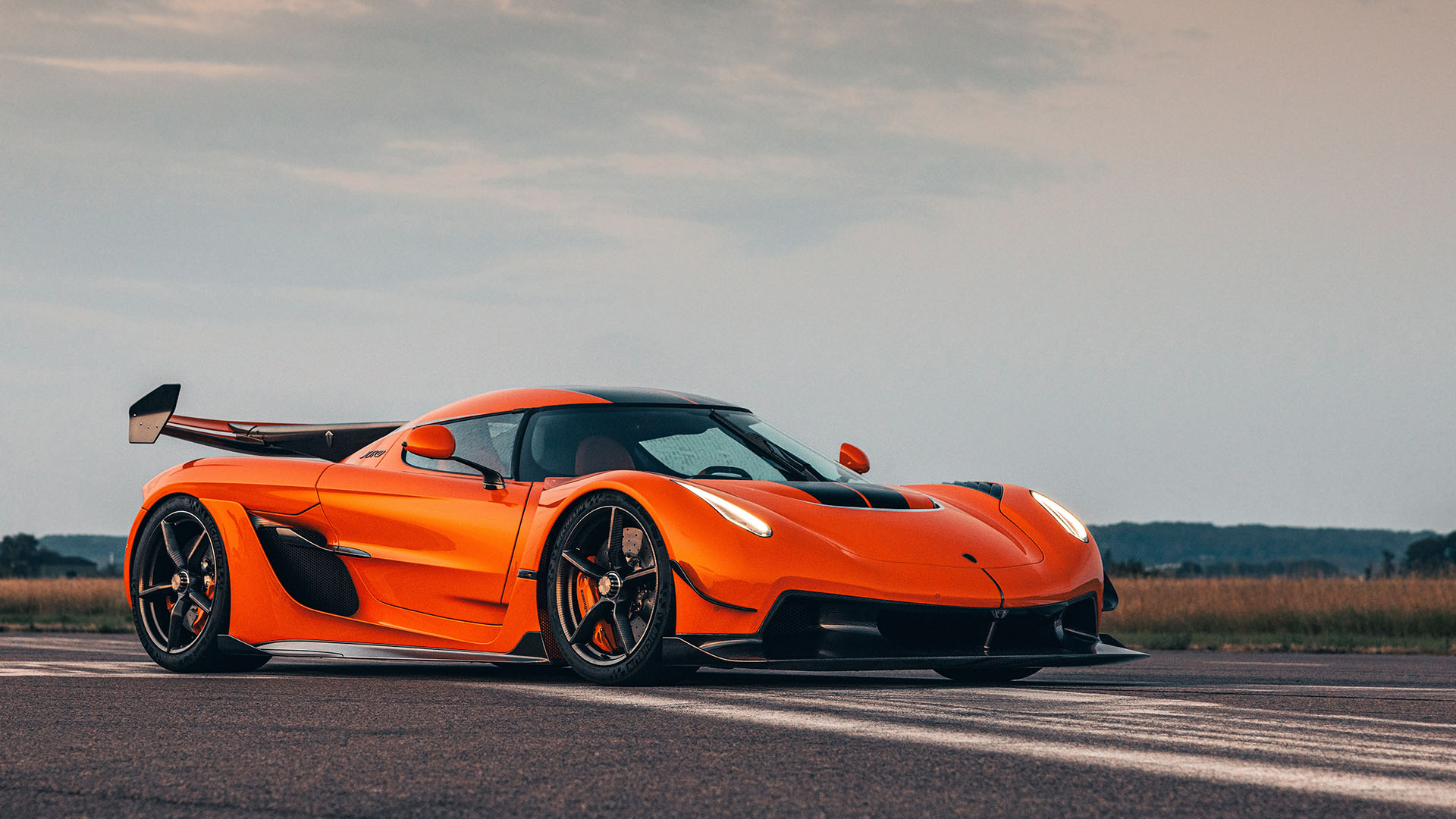

If you look at the amazing cars made by Koenigsegg it might be hard to imagine this hypercar company was founded only 27 years ago, Christian von Koenigsegg started Koenigsegg Automotive AB in 1994 and quickly became a world leader in engineering and manufacturing of extreme performance hypercars, based in Ängelholm in the south of Sweden, Koenigsegg now holds about 400 employees, and they are still expanding as we speak.
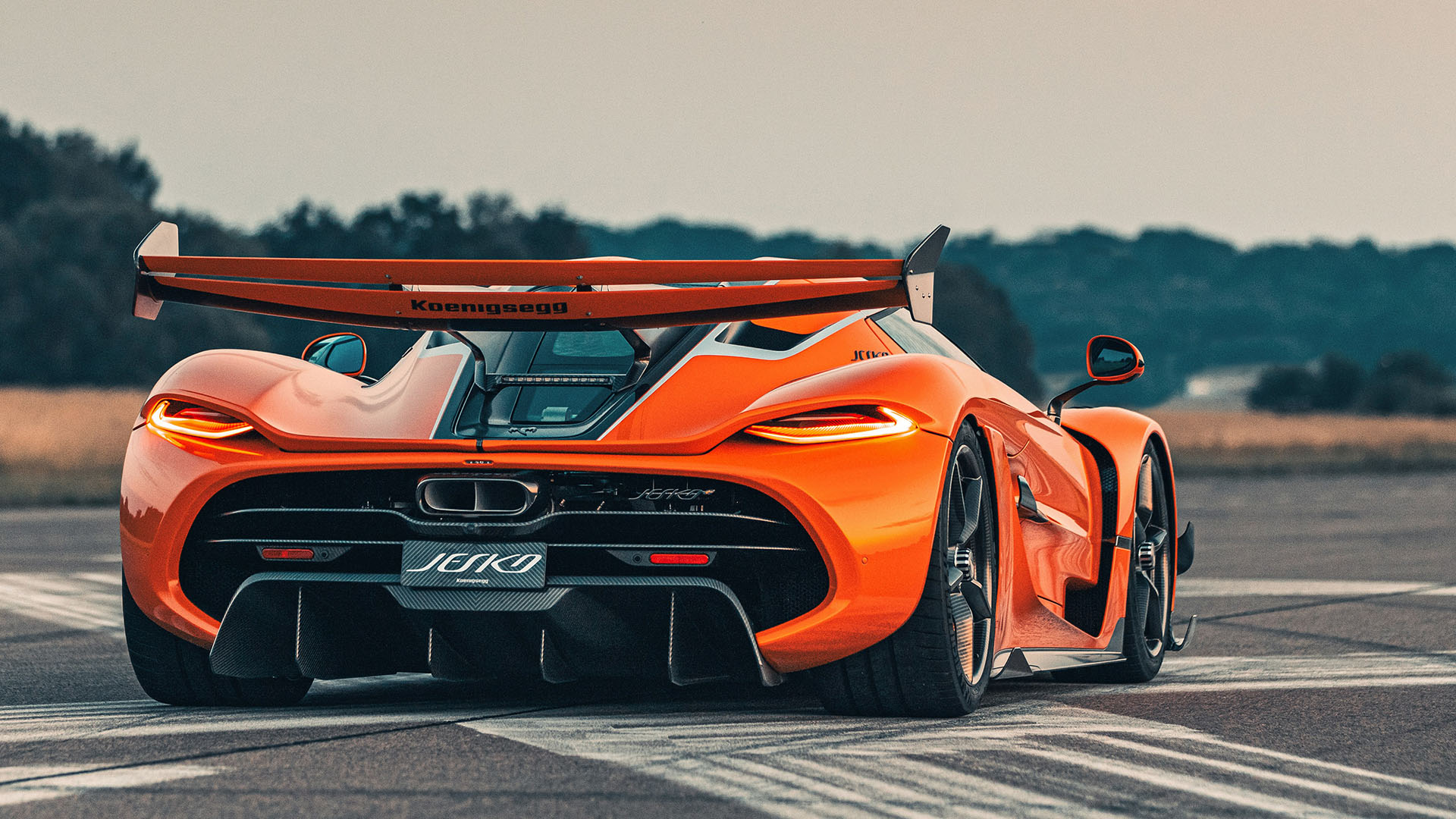

CEO and Founder Christian von Koenigsegg states: “We are very excited to showcase this pre-series Jesko in conjunction with the start of production of the 125 Jesko and Jesko Absolut customer cars. As part of our gradual expansion, the Jesko’s pre-assembly begins at an extended 10,000 square meter facility”
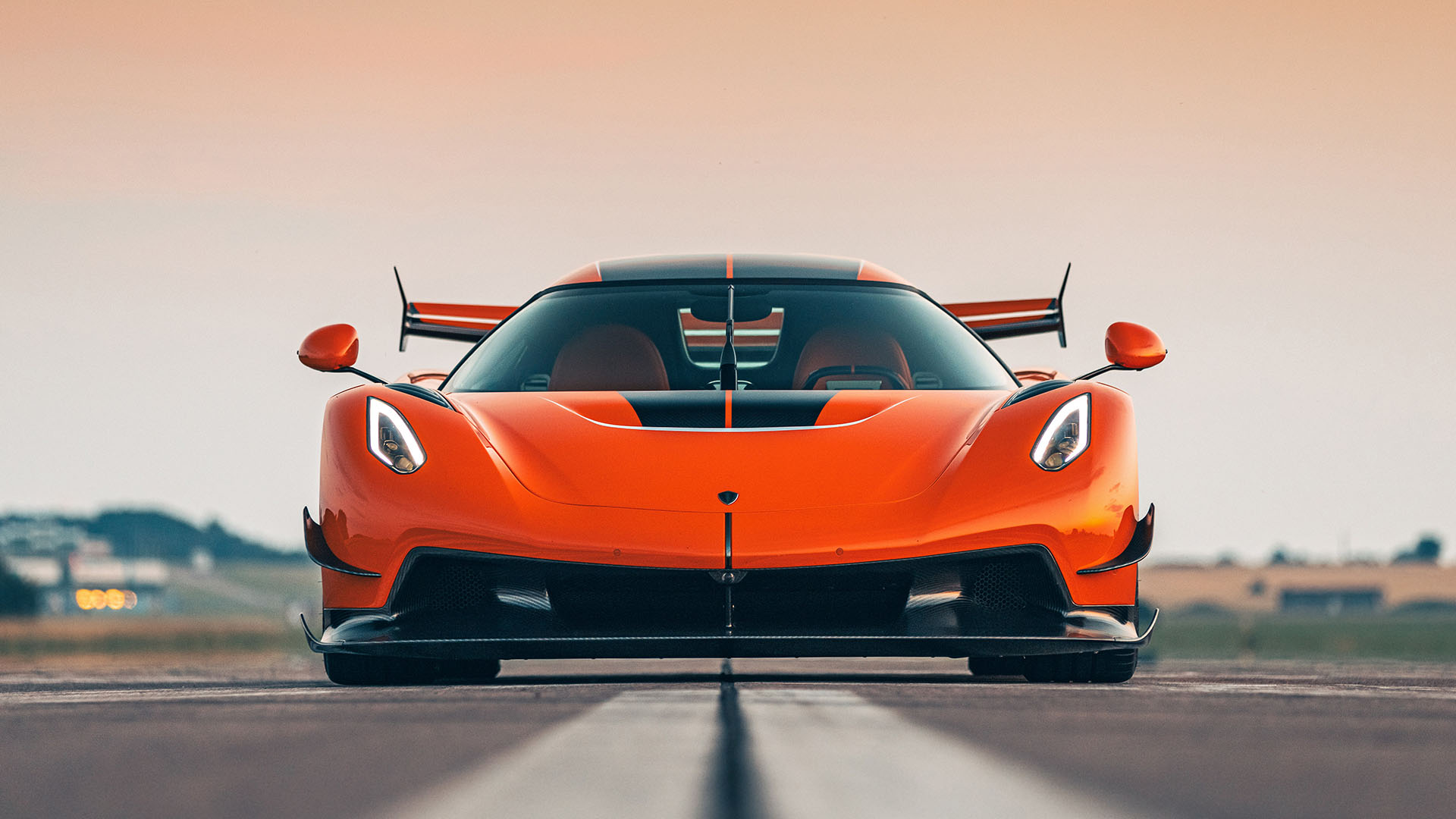

To be honest, I wasn’t really blown away by the white Koenigsegg Jesko at the 2019 GIMS in Switzerland, I was fortunate enough to be there at the press conference when Christian von Koenigsegg unveiled the car, and while the aero is extremely wild, the white and green just didn’t work for me, but seeing this Jesko in bright orange changes everything, especially with the orange interior now looking so much better than the plain-looking black upholstery inside the Geneva show car.
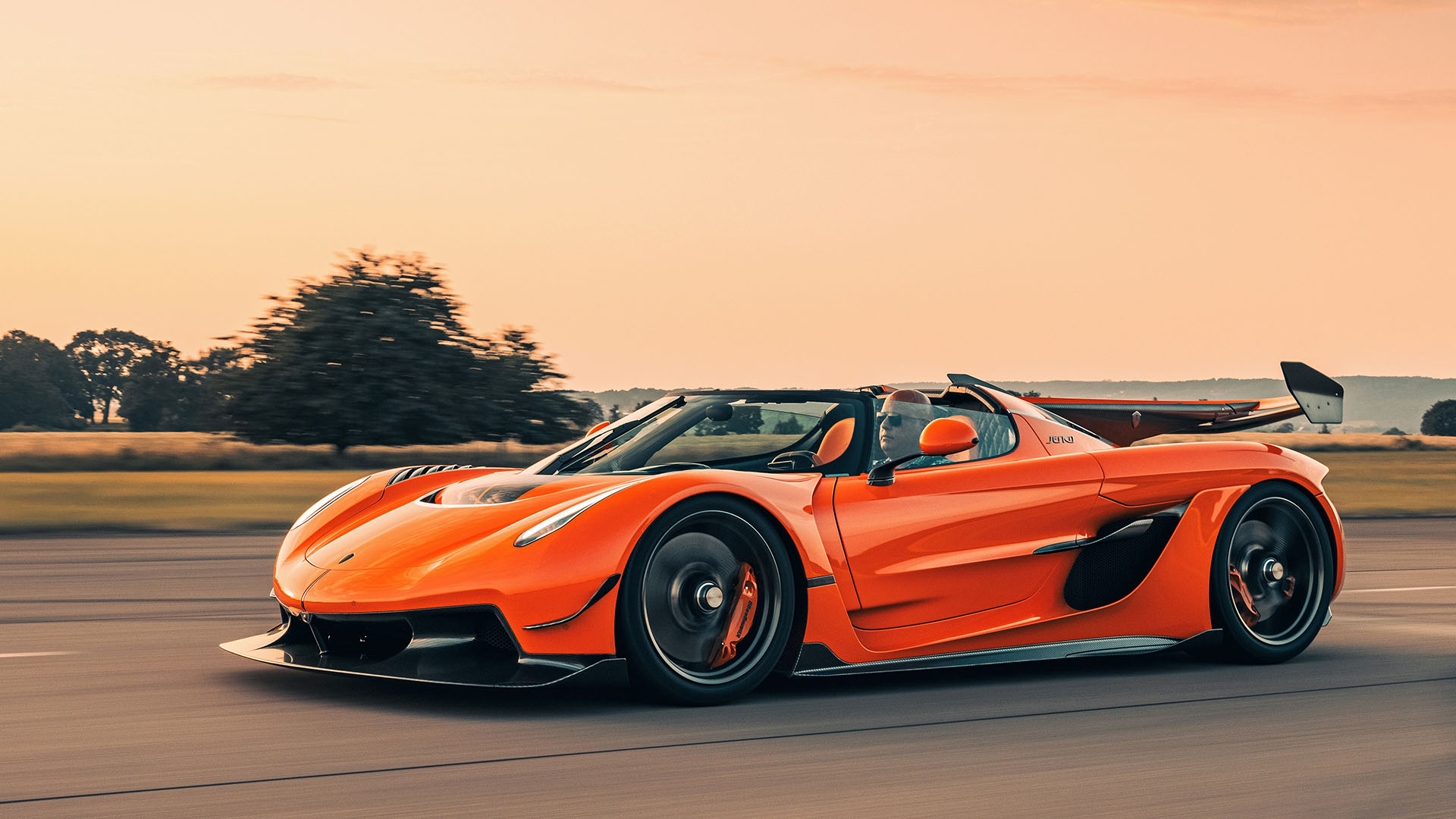

Koenigsegg is getting ready to start production of the 125 Jesko and Jesko Absolut customer cars, after almost three years of prototype, testing, redesigning, and preparing for production, and judging from the photos of this bright orange production prototype, there isn’t too much different in terms of overall look compared to the 2019 Geneva show car, and I absolutely love the fact you can still take the top off and drive the Jesko as a convertible … I’m sorry, I like open-top cars, even if they can go over 300 mph.
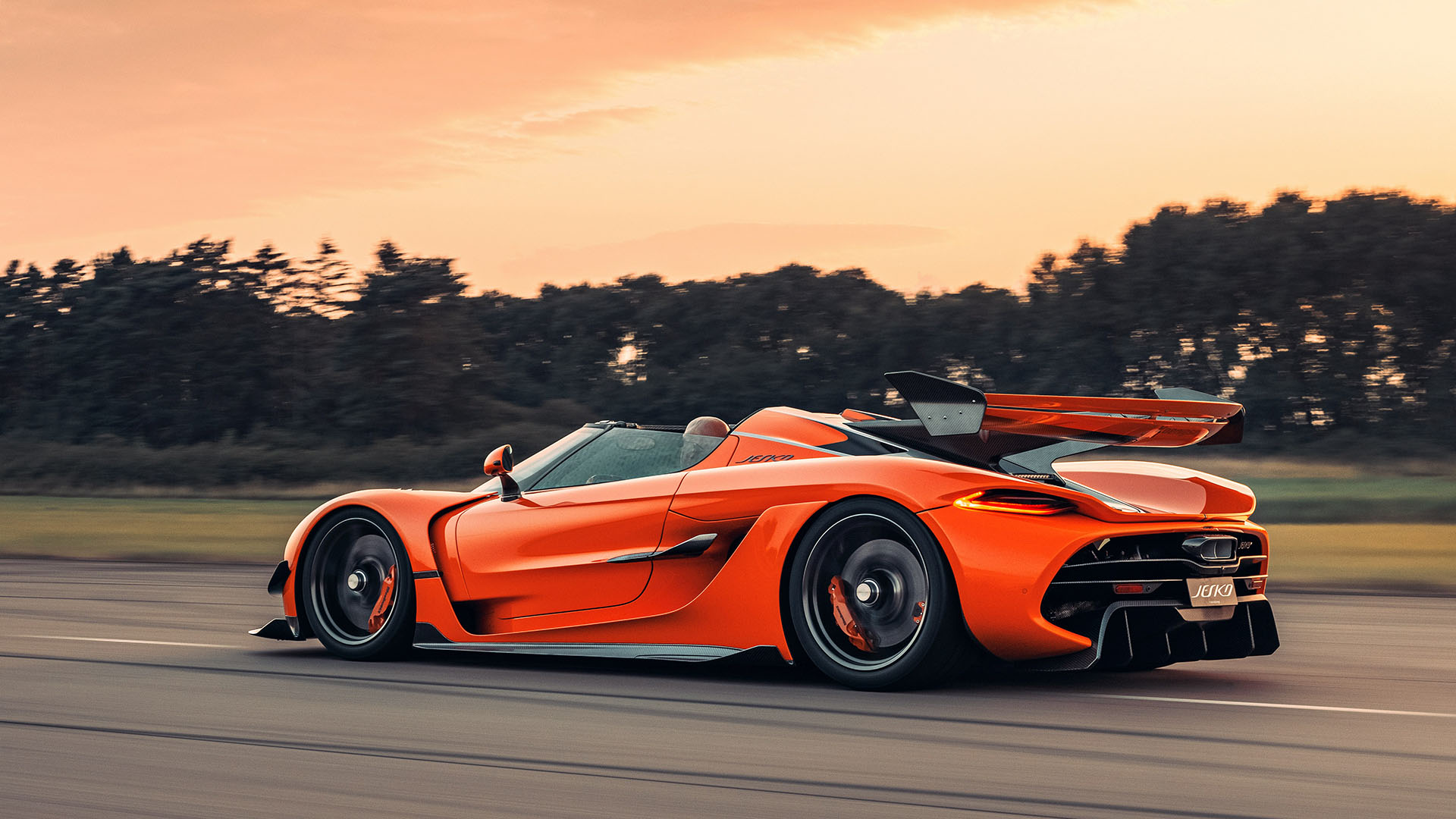

During final shakedown testing, which Koenigsegg does at very high speeds mind you, it became clear this hypercar handles like no other, thanks to an active triplex damper added to the front suspension, active aerodynamics (that massive rear wing moves!), Michelin tires that have been developed specifically for the Jesko, and the Koenigsegg bespoke Electronic Stability system.
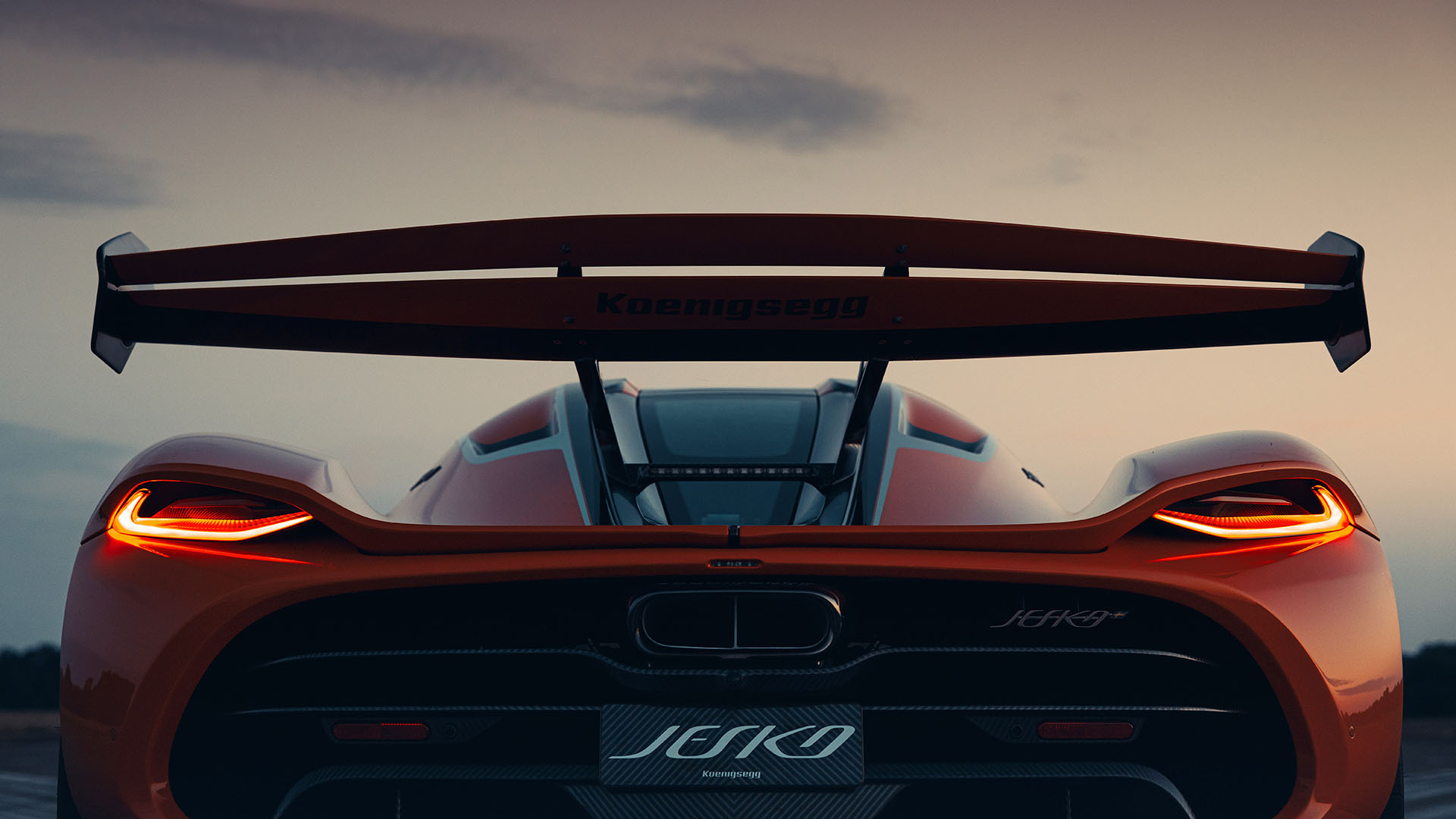

An evolution in DCT, Dual Clutch transmissions, that is yet unseen since its development is the new LST, or Koenigsegg own patented Light Speed Transmission that offers seamless gear shifts, both upshifting and downshifting, a gear change is as fast as the speed of light according to Christian von Koenigsegg, this ‘world’s fastest transmission’ consists of nine forward gears and seven wet, multidisc clutches in a compact, ultra-light package.
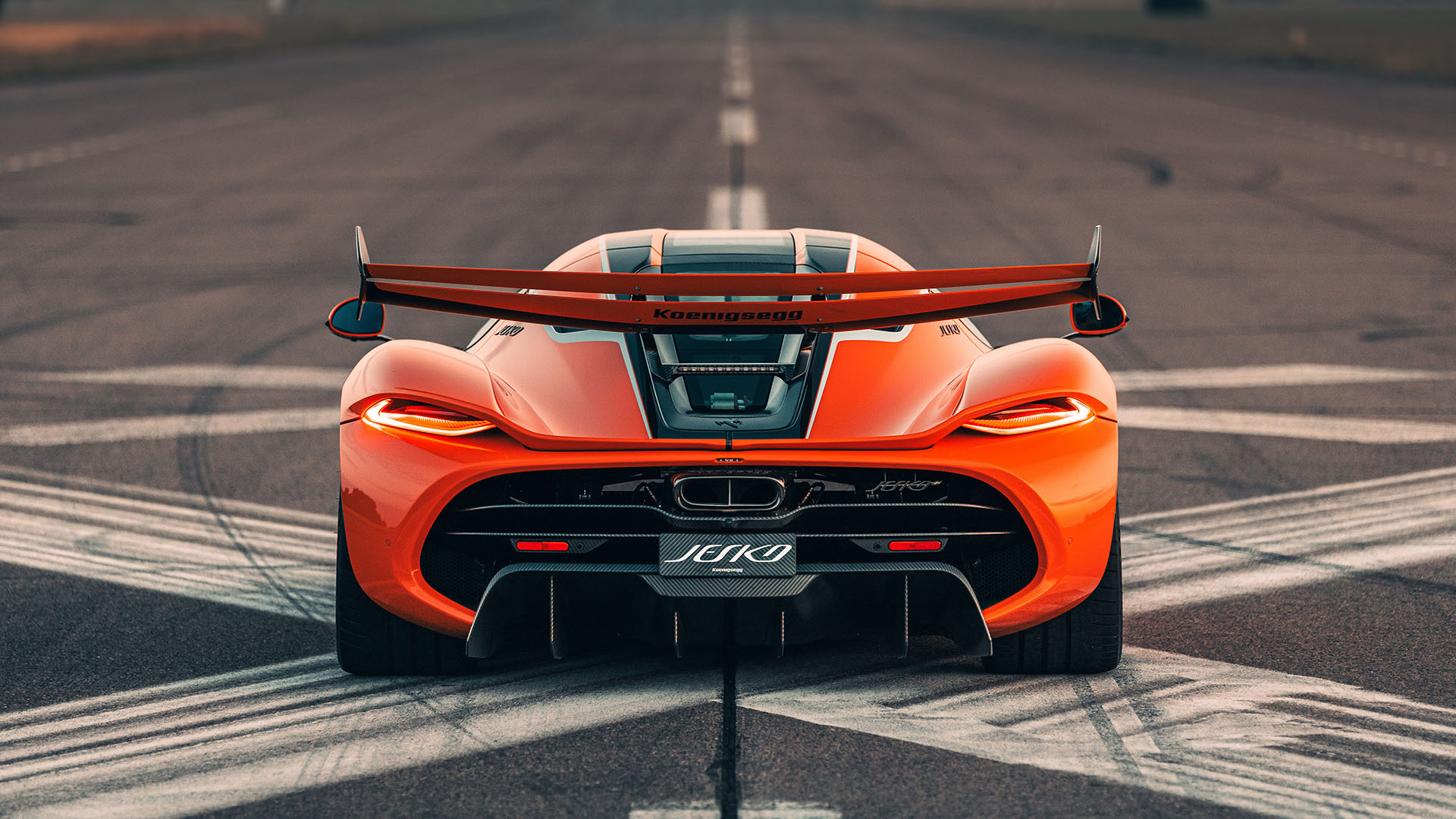

Jesko prototype driver Markus Lundh: “The Jesko feels very natural to drive. Because of its seamless shifting, whether up or down, everything just happens much faster. There are no delays, it is very responsive and behaves exactly the way you want it to. For a car of its size and power, it is very agile in the way it reacts to steering and does not spin out even with sudden movements at full throttle”
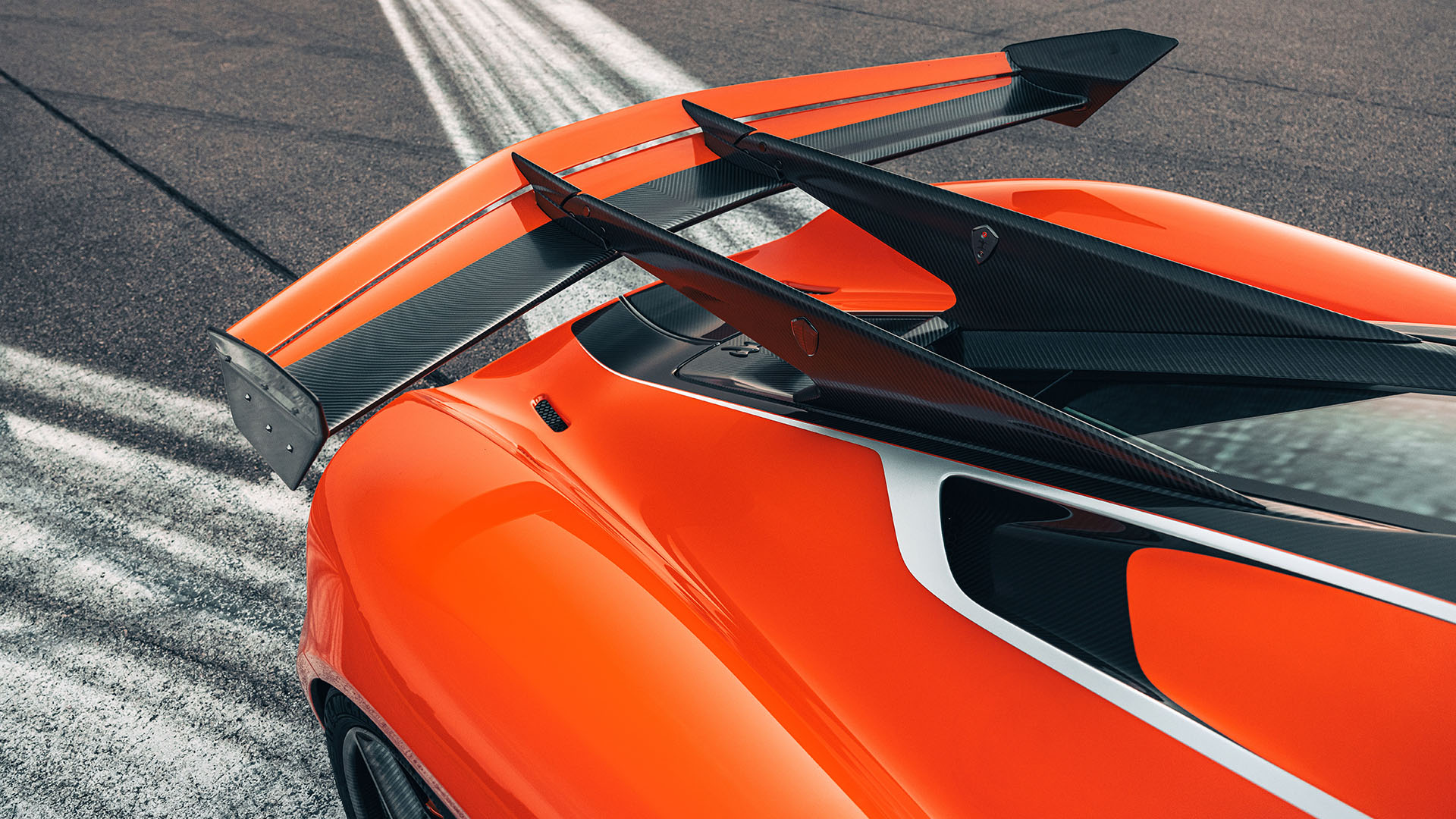

The Koenigsegg Jesko will come with ‘Autoskin’, first seen on their Regera, at the touch of a button on the remote control, miniaturized hydraulics initially designed to operate aerodynamic systems will engage to open the car’s doors and hoods, for a true touchless entry, but more importantly, it looks amazing at a car event too.
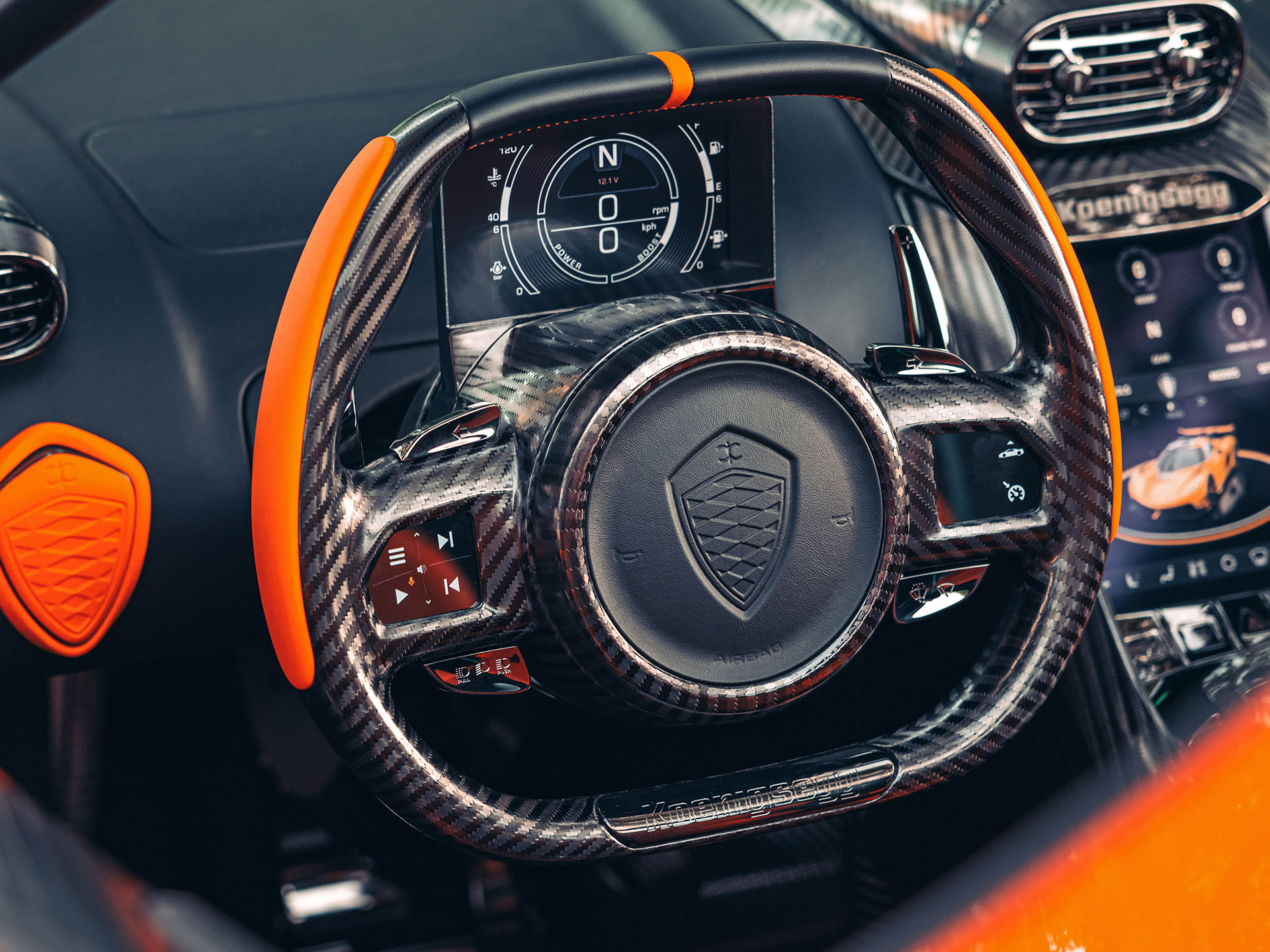

A redesign of Koenigsegg’s very special, signature dihedral synchro-helix door hinge now allows opening slightly outwards and upwards compared to the Regera, unveiling a truly mesmerizing interior in leather, Alcantara, carbon fiber, aluminum, and even glass. The SmartCluster display behind the steering wheel actually rotates when the driver takes a turn, while two SmartWheel touchscreens embedded into the actual steering wheel make several features accessible with just a touch or a swipe.
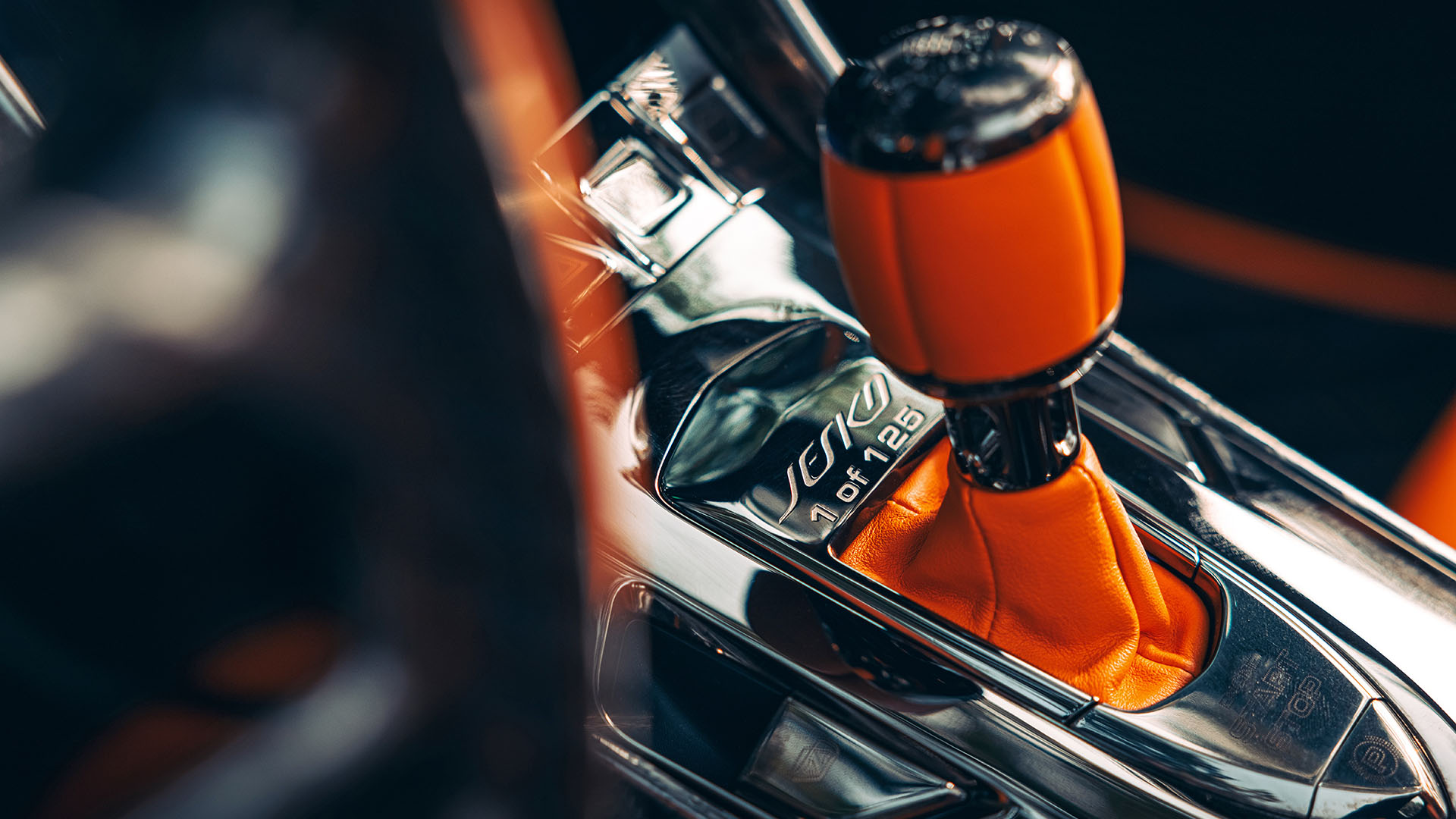

Controls for seat position and heating are available via the SmartCenter touchscreen. Drivers can find the perfect driving position by matching their carbon fiber seat position with the fully adjustable steering column and pedal box, and whit that amazing von Koenigsegg shield adorned key that can be fitted onto its very own indent on the dashboard, the interior just looks so luxurious and sporty at the same time … this isn’t some Sparton, uncomfortable supercar, but more of an ultra-fast Grand Touring version of a hypercar.
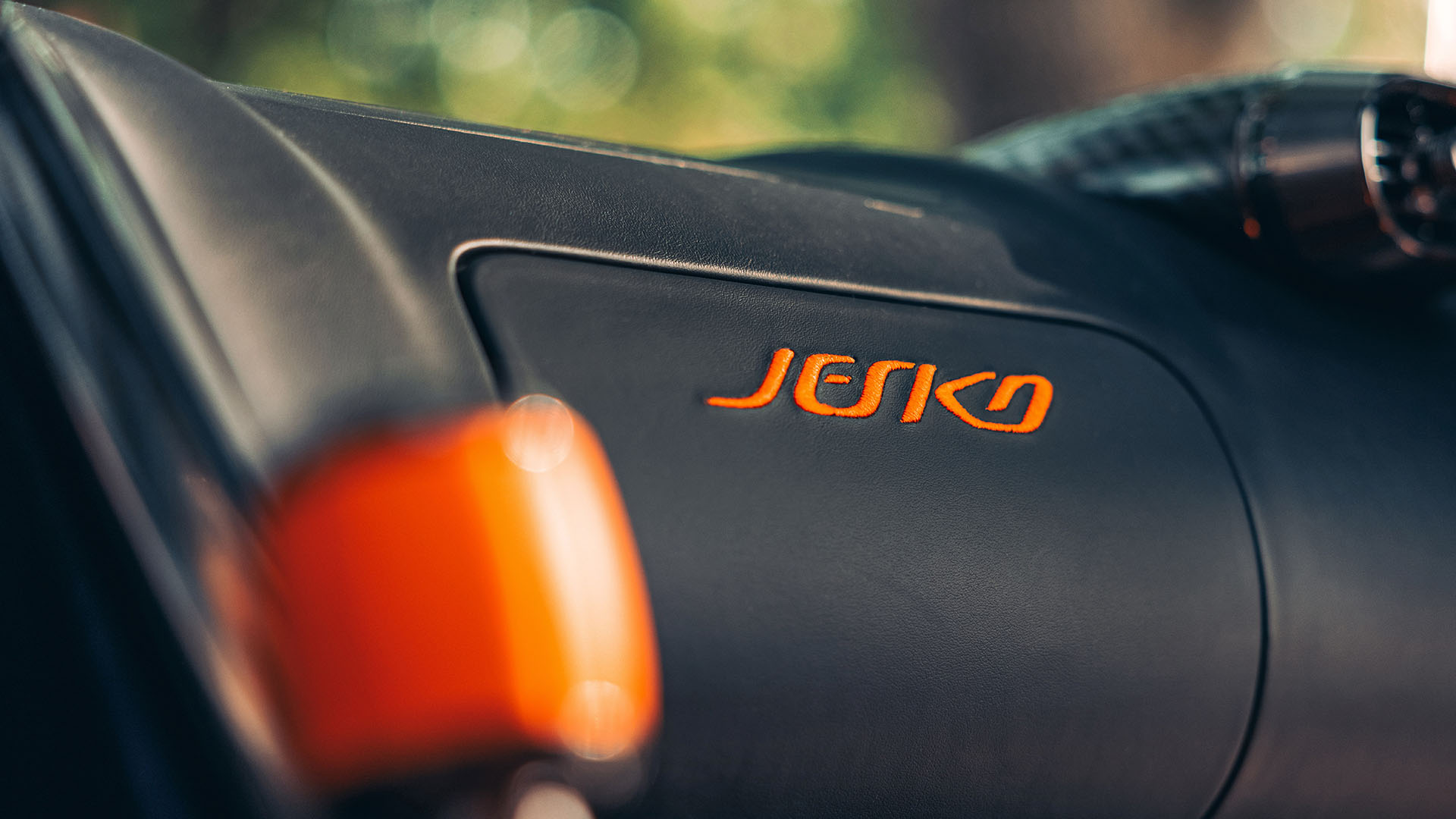

As already mentioned, the first of these $3,000,000 hypercars ‘Made in Sweden’ will be delivered to their fortunate customers by the spring of 2022, I’m really curious as to what special color combination we’ll be seeing on the Koenigsegg Jesko, and just how the split between Jesko and Jesko Absolut will be … will more customers opt for the brutal race-track, LeMans style of the Jesko, or will the Jesko Absolut with her sleeker lines and higher top speed be more popular?
And what about this … will the Koenigsegg Jesko beat the 282.9 mph top speed record of the SSC TUATARA? On paper the Jesko Absolut should be capable of going well over 300 mph, Koenigsegg even mentioned 330 mph for the Jesko Absolut, but what will be the top speed in a real-life environment, on the road, going in two opposite directions … what will the average top speed of the Koenigsegg Jesko Absolut be in that case … only time will tell …
Koenigsegg Jesko Absolut: Top Speed Model Aims at 500km/h Mark!
The top-speed focused Koenigsegg Jesko did materialise earlier this week. It had been widely rumoured during the lead up to the Geneva Motor Show 2020. The Koenigsegg Jesko Absolut is set to be the fastest Koenigsegg ever built and compromise downforce for a low drag coefficient.
The Koenigsegg Jesko Absolut isn’t a special edition either. What Koenigsegg has unveiled is essentially a spec option, available to all Jesko customers.
The Koenigsegg’s USP is its extremely low drag coefficient. At just 0.278 Cd, it glides through the air, using optimised aerodynamics to stabilise the experience. Downforce is reduced to 40 kg at 250 km/h up to a maximum of 150 kg. The standard Jesko has 800 kg at 250 km/h with a maximum of 1,400 kg.
The drag coefficient is achieved through the ditching the massive rear spoiler. Two fins replace it, taking inspiration from the F-15 fighter jet. The practical effect is to clm airflow over the rear bodywork, reducing total drag.
Further changes include an extended rear hood, covered rear wheels, a lowered ride height and the removal of the front wheel louvres and front hood air duct.
Koenigsegg refuses to say exactly how fast the Jesko will go. Announcing the car, Christiaan von Koenigsegg made it clear that Koenigsegg is open to the idea of testing the top speed but didn’t yet have a location to conduct such a test. The previous record run in the Koenigsegg Agera RS was carried out on a closed road in the US, it’s not entirely clear whether such a road might yield higher speeds, perhaps in excess of the 300 mph mark.
The Koenigsegg Jesko Absolut uses that same twin-turbocharged 5.0 litre V8, mounted to a 180-degree crankshaft and a nine-speed Light Speed Transmission system. Power totals 1,600 bhp on E85 feel with 1,500 Nm of torque at 5,100 rpm.
Koenigsegg has made adjustments to the suspension too, the front suspension is more compact, it is softer too, which makes it a less serious drive around a race track. Koenigsegg also claims that a 1:1 power ratio is achieved with a full tank of fuel, luggage and two persons on board.
Koenigsegg’s press conference also confirmed that the Regera will finish production by the end of this year, allowing Koenigsegg to begin production of the Jesko next year alongside its other projects.
Koenigsegg Is Interested in Racing the Jesko at Le Mans
The Company Eyes the Hypercar Class
Christian Von Koenigsegg is the man behind the car company that bears his name. The company makes some of the fastest and most extreme cars on the planet. Back in the early 2000s, the company planned to race in FIA World Endurance Championship. This includes the 24 Hours of Le Mans. The rules of the LMP1 class excluded the car the company had at that point. Now, with the new hypercar class, it seems Koenigsegg is back in the list of possibilities.
It also seems that the company is actually interested in racing. The company’s CEO recently spoke with Road and Track and expressed interest in racing.
We would love to go racing if there’s an opportunity. Because for the first time ever, there’s a category that’s geared towards our type of car. To race in the last ten years, after GT1 was gone, against 911s and 458s, would have been crazy, with a car costing ten times as much, being bogged down by balance of performance. But now, it can make sense again, and it’s extremely interesting.
Koenigsegg went on to say that he has many potential sponsors, so it might not cost his company all that much money. He did say that the company would likely work with a current racing team and not do everything from the factory. That would reduce the strain on the company considerably. If the company does try out racing, it will be with a race-spec version of the new Jesko. That car was rendered, but not yet produced. Time will tell if it actually comes to fruition.
Discover the secrets of the Koenigsegg Jesko and Regera
TopGear sent Jack Rix to Angelholm, Sweden to see what goes into building a Koenigsegg, namely the $2-million Regera and $2.8-million Jesko. It was like a trip to Willy Wonka’s factory, but replace the chocolate with carbon fiber and aluminum. Rix started by chatting Jesko details with Christian von Koenigsegg, finding out at one point that a set of the optional carbon fiber wheels costs $65,000, and those rims are so light that they’re half the weight of the tires. Later on in the video we find out where the money goes: Each wheel takes 50 hours to lay up by hand using 650 individual pieces.
When discussing the engine and transmission, Rix asks if the Jesko will be the car to reach 300 miles per hour. Koenigsegg says the standard model won’t, because its track-focused aero package produces too much drag. The 880 kilograms of downforce at speed is great for cornering, not Bonneville. A special trim called the Jesko “Ambition 300” will go for the record. On a side note, Engineering Explained put out a video diving into the numerous wild features of the 5.0-liter twin turbo V8 that makes 1,500 horsepower on 91 octane gas, and Road & Track dived into the nine-speed Lightspeed transmission that Koenigsegg says “works like a bicycle derailleur.” That’s some bicycle…
There was once a trend of high-end car detailers repairing mediocre factory paint jobs on brand new supecars. We doubt such videos will ever feature a Koenigsegg, since painting a single one of the Swedish coupes takes from 600 to 800 hours to apply at least nine coats of clearcoat, color, and metallic.
Rix also takes a ride in the Regera, and if Beelzebub ever made a hybrid, this is what it would sound like. We recommend taking the ride through Wonderland in the video above. It’s free.
Koenigsegg Jesko gets the scenic photoshoot it deserves
Koenigsegg just opened a new shop in Switzerland, and to mark the occasion, the Jesko was taken out for a proper photoshoot. Koenigsegg had previously only released images from auto shows and the studio.
On March 22, Koenigsegg opened a brand-new facility in Lucerne, Switzerland. It houses Koenigsegg’s newest dealership, which includes a showroom full of stunning vehicles and a workshop. Carage, as it’s called, packed the house for the opening, with cars such as the Koenigsegg Agera R Speed Racer, CC8S, CCXR Edition, Trevita, and the naked carbon Regera. Other makes such as Aston Martin, Jaguar, Maserati, and Porsche help make the place special, but the centerpiece was the Koenigsegg Jesko.
After the Jesko debuted at the Geneva Motor Show, it was also able to breath in some of the fresh high-altitude air during a photoshoot. Eric Griess and Steven Wade set the supercar to a backdrop of gorgeous Swiss mountains, green pastures, and sprawling Lake Lucerne. Yet, the details of the hypercar still stand out.
Take a look at the full gallery above, but try not to fall too deep in love. Remember, all Jeskos are already sold out.
All 125 Koenigsegg Jesko Sold Out in Days
The Koenigsegg Jesko was announced only a few weeks ago at the Geneva Motor Show 2019. Koenigsegg plans to produce 125 as part of a limited production run beginning in 2021. Until that time, there is plenty to do by way of development. One thing Koenigsegg don’t need to think about is customers!
The Koenigsegg Jesko officially sold out before the was even Geneva Motor Show over! The sold-out Jesko, named after Koenigsegg founder, Christian’s father, means that Koenigsegg have nothing further to sell. Both the Jesko and the Regera are completely sold out!
Those who made the order list will be getting something very special. The Jesko is built around a re-designed twin-turbocharged V8 engine. It gets a new 180 degree flat-plane crankshaft, intake and larger turbochargers. Never short of an innovation, Koenigsegg have tackled turbo lag in the most innovative way. An air-injection system pre-spools the turbocharger for instant response.
That engine produces 1,280 hp running on regular fuel with the flexfuel E85 option allowing 1,600 hp in some markets. The power is routed to the rear wheels through a 9-speed multi-clutch gearbox unit that dispenses with traditional synch rings. Active aerodynamics are also a very part of the package.
The cost of each Jesko has yet to be announced, it is safe to assume that it exceeds 6 figures!
Koenigsegg Jesko: Agera Successor Revealed at Geneva
Koenigsegg have officially announced the replacement for the Agera! The Koenigsegg Jesko has been unveiled at the Geneva Motor Show 2019 and will be available in two version, a road car and a track car. The car itself has been named after Christian’s father, Jesko von Koenigsegg, who was unaware of the tribute until it was announced at the show earlier today.
The Jesko is built around a re-designed twin-turbocharged V8 engine. It gets a new 180 degree flat-plane crankshaft, intake and larger turbochargers. Flat-plane crankshafts normally suffer from increased vibration which Koenigsegg have addressed with active engine mounts lifted from the Agera. An innovative air-injection system pre-spools the turbocharger for instant response.
The V8 produces 1,280 hp running on regular fuel with the flexfuel E85 option allowing 1,600 hp in some markets. Torque reaches 1,500 Nm at 5,100 rpm. The transmission is another unique design. It is a 9-speed multi-clutch unit that dispenses with traditional synch rings yet allows lightning fast changes between any gear. It weighs just 90 kg in total, lighter than a comparable dual clutch unit.
The Koenigsegg Jesko sits on a carbon fibre monocoque, 40 mm longer and 22 mm taller than the Agera allowing additional head and leg room. The triplex damper returns at the rear wheels and an additional version has been added to the front. Koenigsegg have incorporated rear wheel steering too. Carbon fibre wheels are an option and are larger than those found on the Agera RS.
The Koenigsegg Jesko is a master in aerodynamics too. The rear wing is active, similar to the later Agera models. The front splitter is also deeper than ever before with active under body flaps working to maximise downforce. Even the wing mirrors are optimised to produce 20 kg of downforce each! At 275 km/h, the Jesko produces 1,000 kg of downforce.
The bodywork gets a new Koenisgeg technology called Autoskin. It uses electrics and miniaturised hydraulics to operate the doors and hood. This means that the Koenisegg remote key can be used to open most parts of the car. The roof lifts out of the Jesko, as with most Koenigsegg models.
Inside, a new TFT touchscreen is included, inductive phone charging, Bluetooth connectivity and USB inputs. The infotainment system uses a 5 inch racing display mounted to the steering wheel and a 9 inch central display. Two touchscreens on the steering wheel control other aspects of the car.
Pricing and market launch are yet to be revealed with Koenigsegg hoping to sell the Jesko to customers in the US, Europe, Asia and the Middle East!
Koenigsegg’s Jesko Comes With 1,600 HP and Can Do 300 MPH
Mind-Numbingly Fast
Koenigsegg’s new Jesko hypercar, named after his father who helped him start his company, claims over 300 mph as its top speed. While Koenigsegg hasn’t proven this in the real world, in simulations, the Agera successor has achieved it and the company thinks it’s true.
There are two different versions of the car. Koenigsegg designed one for a high speed run to make the 300 mph, and one with some serious downforce for the racetrack. No matter the variant, you get a new carbon fiber and aluminum chassis, new suspension setup, redesigned engine, and a special gearbox. The car may be the successor to the Agera, but it’s all new.
The car comes with a 5.0-liter twin-turbo V8. The company worked on the engine to make it more powerful and lighter than any other V8 it has produced. It’ll make 1,600 hp on E85 biofuel and 1,280 on regular gasoline. Torque numbers sit at 1,106 lb-ft. The car comes with a special 9-speed multi-clutch gearbox the company builds in-house.
Thanks to the huge front splitter, the big wing at the back, and the body’s overall aerodynamic shape, the car produces a whopping 2,200 pounds of downforce at 170 mph. At the vehicle’s top speed it makes over 3,000 pounds of downforce.
The interior of the car has all the accouterments befitting a luxury hypercar. The vehicle will come with the latest technology and top-notch interior materials, including plenty of carbon fiber. The G-force display on the dash is a nod to tech geeks and pilots everywhere and it just looks cool. Not to mention the gorgeous displays well-placed in the cabin.
Koenigsegg plans to build 125 Jeskos over the course of the next few years. If you’ve got your heart set on one you’ll need just under $3 million.

